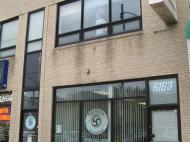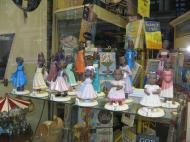November 3, 2013 Field research Dmitri M. Bondarenko and Alexander E. Zhukov in the USA
Publication date: 6.11.2013
Field research by members of the Institute for African Studies in five U.S. states
|
From September, 15 to November, 2 of the current year, two members of the Institute for African Studies, Vice-Director of the Institute Prof. Dmitri Bondarenko (D.Sc.) and junior research fellow Dr. Alexander Zhukov, took part in a field research conducted in five states and eight cities of the USA. The field research was carried out as part of an anthropological project of the Institute aimed at exploring the relationship between and mutual perceptions of recent migrants from Africa and African Americans residing in the USA. The project was supported by the Russian Foundation for Humanities (project 13-01-18036). The researchers carried out field work in Philadelphia (Pennsylvania), Boston, Cambridge, Springfield (Massachusetts), Evanston, Chicago (both Illinois), Minneapolis (Minnesota) and New York City. The following methods were used by the project participants: interview (structured, semi-structured, non-structured) and observation. During the field work, the project participants put on record 40 large interviews (from half an hour to over an hour and a half, mostly according to a plan) and 105 short conversations (up to 30 minutes, without a plan or with only selected questions from the plan being asked). Those who participated in the project as respondents included immigrants from 22 countries in the Sub-Saharan Africa, African Americans, black people from 5 Caribbean states and U.S. residents of different (European, Chinese, Mexican, Arab) origin. The field research pursued a goal of studying a most broad range of specific features characterizing the relations between recent immigrants from Africa and African Americans, as well as their mutual perceptions, and originating from various social contexts and backgrounds. In order to achieve this, the project participants met and talked to individuals from very different (by type of professional occupation (if any), income level , etc.) social groups. In particular, the researchers did intensive field work in those parts of the cities and in those locations where, in their opinion, they were most likely to meet people who would be, first, fully aware (based on personal experience) of the relations between the two social groups in questions and, second, ready to share this experience. The research team met and talked to, inter alia, members and visitors of the NGOs and businesses closely linked to Africans or being associated with Africa (or particular African countries). This may be exemplified by African malls, shopping centers and stores often attended by Africans and/or African Americans; ‘African’ hair braiding salons, cafes and restaurants of African (Nigerian, Ghanaian, Senegalese, Cape Verdean, Ethiopian, Ertitrean, Somali) cuisine, etc. An important part of the work was done by participating in public events (both formal and informal) organized by associations of migrants from particular African countries and other social bodies of Africans in the USA, pan-African forums, etc. Another major part of the respondents was comprised of individual community activists of African and African American origin, members of the academic community and students from both groups in question. In the course of the field work, the scholars took 157 photographic pictures resulting from their observation. Conclusions to be drawn from the analysis of the accumulated research data are supposed to lay the ground for future academic publications and presentations at Russian and international academic conferences. The participants of the research would like to express their sincere gratitude to their American colleagues and friends Martha Aleo, Ken Baskin, and Hal Weaver for their invaluable help in its organization and conducting. |






























